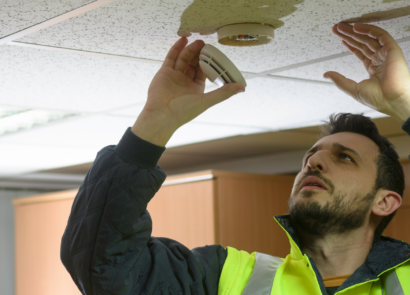As we celebrate Product Care Recycling’s 30th anniversary, we’re taking a moment to reflect on our incredible journey and the positive impact we’ve made together. From our humble beginnings in British Columbia to becoming a leader in recycling programs across North America, we’re proud of our achievements and excited for what’s to come. Join us as we commemorate 30 years of environmental stewardship with these 30 fun facts:
1. It all began in 1994!
Product Care Recycling started as the BC Paint Care Association (BCPCA), with a big vision and a focus on paint.
2. From one program to many
What started as a single paint program has blossomed into a multi-program initiative that helps Canadians recycle more than just paint. Today, we’ve grown to manage 22 programs across 12 jurisdictions.
3. Recovering more than 120 million litres of paint
As of 2023, Product Care has recovered over 120 million litres of paint, keeping it out of waterways and landfills.
4. Energy savings in millions of paint cans
Recycling paint saves energy by recovering and reusing raw materials—just one gallon of recycled paint can save 13 gallons of water needed to produce new paint.
5. A new life for recycled steel paint cans
Recycling steel paint cans helps create new steel products, including construction materials like rebar. This process conserves resources and supports sustainable development.
6. Free paint, anyone?
Through our PaintShare program, you can pick up free leftover paint at many of our recycling locations. A win for your wallet and the environment.
7. We may not know the most popular accent paint colour in Canada, but…
The vibrant red of the maple leaf is certainly a strong contender – think front doors! 🍁 What’s your favourite accent colour to paint with?
8. The journey of latex paint
Did you know that unrecyclable latex paint can be turned into biomass fuels or even new concrete products? Recycling is more versatile than you think!
9. Our offices span the country
Vancouver, Delta, Montréal, and Toronto. Our team members are here to support recycling initiatives from every corner of Canada.
10. Remember the BUD rule
Buy what you need, Use what you buy, Drop off the rest for recycling. It’s the golden rule for eco-friendly living!
11. We’re everywhere
With over 2,200 recycling locations across Canada, Product Care Recycling is here to help you dispose of items like light bulbs, paint, alarms (BC only), and HHW/HSP responsibly.
12. What is the difference between HHW and HSP?
HHW stands for Household Hazardous Waste, which includes items like pesticides, gasoline, corrosives, and toxic liquids. HSP, or Hazardous and Special Products, refers to similar items – the terminology just varies from province to province.
13. HHW initiatives started in 1997 in BC
The initiatives have since opened the door to HHW programs in other Canadian provinces including Manitoba, Saskatchewan, Ontario (Pesticides and Corrosives), and Quebec (Non-refillable fuel containers), and Alberta is joining in 2025 with a new HSP program
![]() 14. What does the flammable symbol mean?
14. What does the flammable symbol mean?
The symbol indicates that the product can easily catch fire if exposed to heat, sparks, or flame.
![]() 15. What does the toxic symbol mean?
15. What does the toxic symbol mean?
It means that the product can cause harm if ingested, inhaled, or absorbed through the skin. Household hazardous items like pesticides often carry this symbol.
![]() 16. What does the explosive symbol mean?
16. What does the explosive symbol mean?
The products can explode if subjected to heat or pressure. It’s usually found in aerosol cans.
![]() 17. What does the corrosive symbol mean?
17. What does the corrosive symbol mean?
This symbol indicates that the products can burn your skin on contact.
18. Corrosives tamed after drop-off
Once drop-off, corrosives are neutralized, treated and stabilized with concrete before they are securely stored.
19. Expanding the green initiative in Quebec
Product Care recently launched a new program in Quebec for non-refillable pressurized fuel containers (NRFCs). This initiative helps safely dispose of these items and prevent them from entering our landfills.
20. 1 million alarms and counting
By the end of 2023, we’ve recycled over 1 million smoke and CO alarms. These are dismantled, and valuable materials like plastic and metal are recovered and reused!
21. Smoke alarms have an expiration date
Smoke alarms should be replaced every 10 years. Got an expired one? Drop it off at one of Product Care’s recycling locations
22. Collection events galore, annually
We host over 600 collection events annually! Check our Facebook page to see if there’s one near you.
23. The 3Rs: Reduce, Reuse, Recycle
These principles guide everything we do and it helps us conserve resources and reduce waste.
24. The power of aluminum
Recycling aluminum can save as much as 96% of the energy required to produce it from raw materials. Plus, some types of aluminum can be recycled indefinitely without losing quality!
25. What does EPR mean?
Extended Producer Responsibility (EPR) means that producers are responsible for the lifecycle of their products. Product Care is proud to be North America’s first EPR, leading the charge in sustainable practices.
26. LEDs: The longest-lasting lights
The Centennial Flame in Ottawa has been burning continuously since 1967. But did you know that LED lights typically have an operational lifespan of up to 100,000 hours?
27. Lighting the way with 75 million bulbs
As of 2023, we’ve recycled over 75 million light bulbs—enough to create a glowing trail from Vancouver to Halifax and back!
28. Free commercial pick-up
Got large volumes of paint, alarms, or light bulbs? We offer free commercial pick-up for qualifying businesses. Check if you qualify on our website.
29. Past programs: Recycling toys
Did you know we once helped manage a toy recycling program? While we no longer do so, it’s another chapter in our history of environmental stewardship.
30. Crossing board to the US
In 2016, Product Care expanded its services to manage recycling programs in the US. We now manage US programs for light bulbs, mattresses, and thermostats.
—
As we look back on our 30 years of achievements, we are grateful for the support of our partners, members, and the community. Together, we have made significant strides in protecting the environment and promoting sustainable practices.



